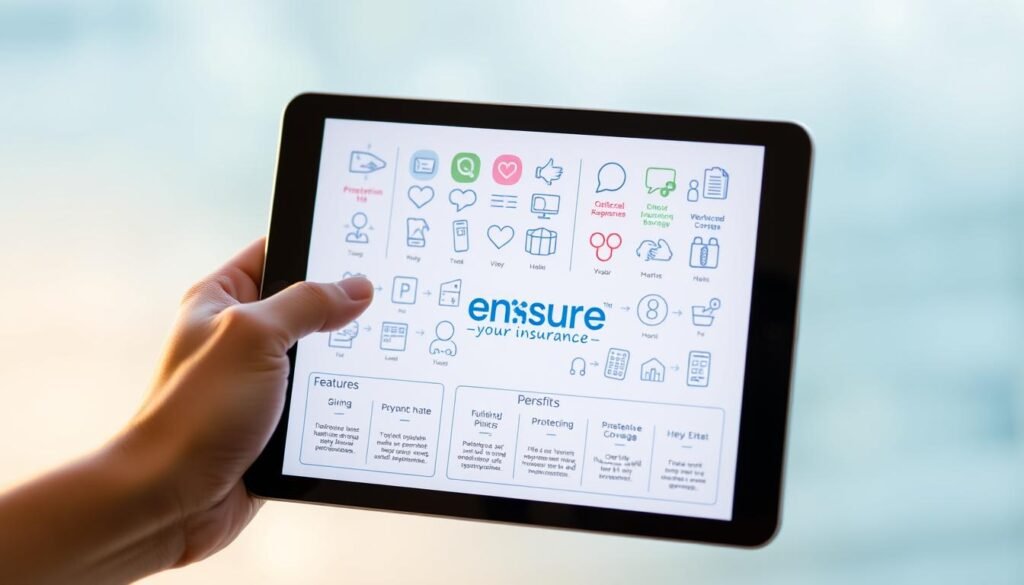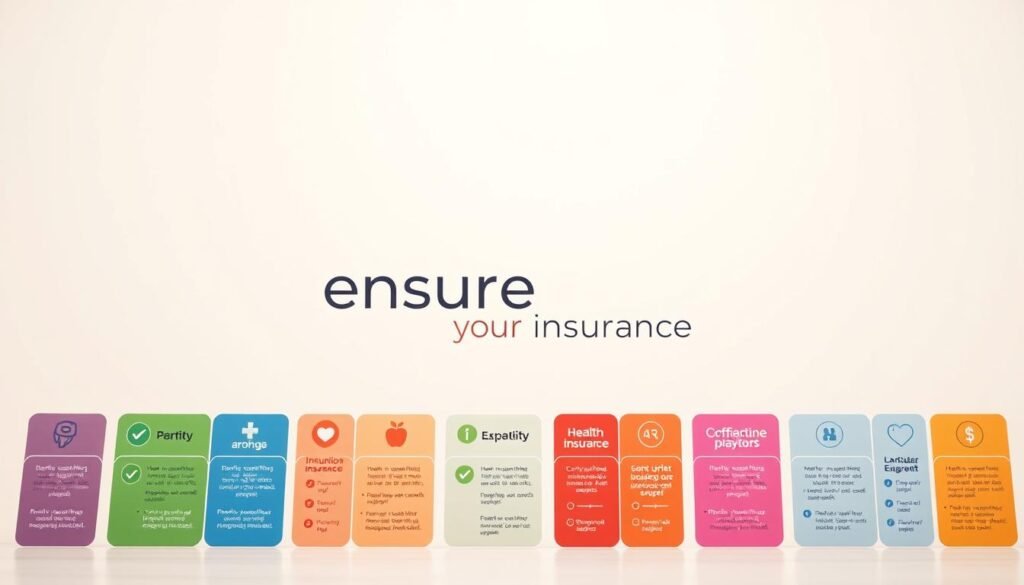Health Insurance
Affordable healthcare options, Bảo hiểm y tế, Chi phí y tế, Chính sách sức khỏe, Chọn lựa thông minh, Choosing the best health plan, Chương trình sức khỏe, Đánh giá bảo hiểm, Dịch vụ y tế, Health coverage selection, Health insurance comparison, Kế hoạch y tế, Lựa chọn phù hợp, Medical insurance research, Phân tích rủi ro, Quản lý bệnh tật, Quyền lợi bảo hiểm, Thủ tục đăng ký
admin
14 Comments
Discover the Right Health Insurance Plan for You
Are you sure your health insurance coverage really fits your needs?
Finding the right health insurance plan can be tough. But it’s key to keep you healthy and safe from financial loss.
There are many health insurance benefits and choices out there. It’s important to look at and compare them to pick the best one for you.
Recent studies show that using online tools can make finding the perfect plan easier. These tools help you compare providers and facilities.
Key Takeaways
- Check if your current health insurance meets your needs.
- Look at different health insurance plans and their benefits.
- Use online tools to make your search simpler.
- Think about your financial safety when picking a plan.
- Check the network of providers and facilities.
Understanding Health Insurance Fundamentals
Health insurance is more than just a monthly payment. It’s a safety net against huge medical bills. These bills can be very hard on your finances.
What Health Insurance Actually Covers
Health insurance plans cover many medical costs. This includes doctor visits, hospital stays, and surgeries. Some plans also cover dental and vision care.
The amount of coverage varies by plan. Some plans offer full coverage, while others have more limited benefits.

Key Health Insurance Terminology Explained
Knowing health insurance terms is key. It helps you understand the healthcare system better. This way, you can make smart choices about your coverage.
Premiums, Deductibles, and Copayments
Premiums are your monthly payments for health insurance. Deductibles are what you pay before your insurance starts. Copayments are fixed fees for services like doctor visits or prescriptions.
Networks and Provider Types
Health insurance plans have networks of providers. Using in-network providers can save you money. Knowing about different providers and their roles helps you use your benefits wisely.
The Importance of Health Insurance in Financial Planning
Health insurance is vital for financial planning. It shields you from unexpected medical costs. By picking the right plan, you can get affordable healthcare and keep your finances stable.
Types of Health Insurance Plans Available in the US
Health insurance in the US comes in many forms, each fitting different needs. Knowing what’s out there is key to picking the right plan.
Health Maintenance Organizations (HMOs)
HMOs are cost-effective, focusing on preventing health issues. You must choose a primary care doctor who manages your care and refers you to specialists in their network.
Benefits and Limitations
HMOs are cheaper, with lower costs for you. But, you must see doctors within their network, except in emergencies.
Ideal Candidates for HMOs
Those who value preventive care and are okay with a network of providers might prefer HMOs.
Preferred Provider Organizations (PPOs)
PPOs let you see doctors in or out of network, but costs vary. This gives you more freedom but might cost more.
Flexibility and Cost Considerations
PPOs offer more freedom but are pricier. Seeing specialists without a referral is a plus, but out-of-network care costs more.
Exclusive Provider Organizations (EPOs)
EPOs mix HMO and PPO features. They have a network of preferred providers but don’t cover out-of-network care, except in emergencies.
Point of Service Plans (POS)
POS plans combine HMO and PPO aspects. You need a primary care doctor and referrals for specialists in the network. But, you can also see out-of-network doctors at a higher cost.
High-Deductible Health Plans (HDHPs) with HSAs
HDHPs have higher deductibles but lower premiums. Pairing them with a Health Savings Account (HSA) lets you save for medical costs tax-free.
When comparing plans, think about network coverage, costs, and specialist access. Knowing the options helps you choose the best plan for your health needs.

Marketplace vs. Employer-Sponsored Health Insurance
Employer-sponsored health insurance and marketplace plans are two ways to get health coverage. Each has its own good points and downsides. It’s key to think about health insurance benefits, cost, and your personal situation when choosing.
Benefits of Employer-Sponsored Coverage
Employer-sponsored health insurance often covers a lot, including preventive care and prescriptions. A big plus is that employers often help pay for it, making it cheaper for you. The Kaiser Family Foundation says, “Employer-sponsored health insurance is the most common coverage for Americans.”
“The majority of Americans rely on employer-sponsored health insurance, highlighting its importance in the US healthcare system.”
Navigating the Health Insurance Marketplace
The Health Insurance Marketplace has many insurance plans with different coverage and costs. You can compare plans and get health insurance quotes from various providers. It’s great for those who are self-employed, unemployed, or don’t get health insurance from their job.
State vs. Federal Marketplaces
Some states have their own health insurance marketplaces, while others use the federal one. Knowing the difference can help you find your way around better.
Subsidy Eligibility and Calculation
Buying insurance through the marketplace can lead to subsidies, which lower your premium costs. You qualify based on your income and family size.
COBRA and Transitional Coverage Options
If you lose your job, COBRA lets you keep your employer’s health insurance for a bit. There are also other temporary health coverage options. They help during times of change.
Essential Health Insurance Coverage Components
Knowing what health insurance covers is key to good healthcare choices. Health insurance plans have important parts that protect against many healthcare costs.
Preventive Care Services
Preventive care is a big part of health insurance. It includes check-ups, shots, and tests to stop or catch illnesses early. Many plans cover these services without extra cost to you, helping avoid expensive treatments later.
Prescription Drug Coverage
Prescription drug coverage is vital for managing medication costs. Plans group drugs into tiers, which affect how much you pay for them.
Formulary Tiers and Prior Authorization
Knowing about formulary tiers is important. They decide how much you pay for drugs. Some drugs need approval from your insurance before they’re covered. This check makes sure the drug is needed and right for you.
| Formulary Tier | Description | Typical Copayment |
|---|---|---|
| Tier 1 | Generic drugs | $10-$20 |
| Tier 2 | Preferred brand drugs | $30-$50 |
| Tier 3 | Non-preferred brand drugs | $50-$100 |
Emergency and Hospital Services
Emergency and hospital services are key parts of health insurance. They cover sudden medical needs and hospital stays. This includes ER visits, hospital admissions, and surgeries.
“Emergency medical services are a vital part of health insurance, protecting you from sudden and costly medical bills.”
Mental Health and Substance Use Disorder Services
Mental health and substance use disorder services are now seen as essential. They include counseling, therapy, and treatment programs.
Maternity and Pediatric Care
Maternity and pediatric care are also key. They ensure expectant mothers and kids get the medical care they need. This includes prenatal care, delivery, and pediatric visits.
Understanding these health insurance parts helps you make better choices. It lets you navigate healthcare options and pick the right plan for you.
Understanding Health Insurance Costs
It’s key to grasp the details of health insurance costs to pick the best plan. Costs include premiums, deductibles, copayments, and coinsurance. These all add up to the total cost of health insurance.
Premium Calculations and Influencing Factors
Premiums are figured out by looking at several things. Insurers use these to guess how much they’ll pay out for claims and the cost of the plan.
Age, Location, and Tobacco Use
Age matters a lot, as older people often need more medical care. Location also affects costs, as healthcare prices differ by area. And, tobacco use can raise premiums because of health risks.
Individual vs. Family Coverage
Whether you choose individual or family coverage impacts your premium. Family plans are usually pricier because they cover more people.
Deductibles, Copayments, and Coinsurance
Other costs include deductibles, copayments, and coinsurance. Deductibles are what you pay first before insurance starts. Copayments are set fees for services, and coinsurance is a percentage of costs after the deductible.
Out-of-Pocket Maximums and Annual Limits
Out-of-pocket maximums are the yearly max you or your family pays for healthcare. This includes deductibles, copayments, and coinsurance. After hitting this limit, your plan covers 100% of eligible costs.
Tax Benefits and Health Savings Accounts
Some health plans, like those with high deductibles, qualify for Health Savings Accounts (HSAs). HSAs let you save pre-tax for medical costs, which can lower your taxable income.
Knowing about these health insurance costs helps you make better choices. This way, you can find more affordable health insurance options.
Affordable Health Insurance Options
There are many ways to get affordable health insurance. These options fit different budgets and health needs. It’s important to know about them to choose the right healthcare coverage.
Medicaid Eligibility and Benefits
Medicaid offers full health coverage to those with low incomes. Who can get it varies by state. It covers kids, pregnant women, parents, and people with disabilities.
Medicaid benefits include doctor visits, hospital stays, and prescriptions. It also covers preventive care.
Children’s Health Insurance Program (CHIP)
CHIP helps families who make too much for Medicaid but can’t afford private insurance. It covers routine care and treatments for kids. CHIP eligibility and what it covers change by state, so check local rules.
Catastrophic Coverage Plans
Catastrophic plans are for people under 30 or those with a hardship exemption. They have lower premiums but higher deductibles. They’re for when you need protection from big medical costs.
Short-Term Health Insurance Considerations
Short-term insurance gives temporary coverage, up to 12 months. It’s good for those between jobs or waiting for other insurance. But, it doesn’t have all the benefits of major medical plans.
Healthcare Sharing Ministries and Alternatives
Healthcare sharing ministries are faith-based groups that share medical costs. They’re not insurance but can be a cheap option for some. It’s key to know their limits and what’s needed.
Looking into these affordable health insurance options can help you find the right fit. Knowing what each offers and what’s needed can guide your choice.
How to Compare Health Insurance Plans Effectively
To compare health insurance plans well, you need to look at several key points. These points affect your coverage and how much you pay.
Network Coverage Considerations
Network coverage is very important. Knowing the difference between in-network and out-of-network costs can really affect your spending.
In-Network vs. Out-of-Network Costs
- In-network providers give you lower rates, saving you money.
- Out-of-network care costs more, with higher deductibles and coinsurance.
Verifying Provider Participation
Make sure your doctors are in the plan’s network. You can check this on the insurer’s website or by calling their customer service.
Formulary and Prescription Coverage
The plan’s formulary is also key. It lists the prescription drugs covered. Make sure your drugs are on the list and know the costs.
Quality Ratings and Customer Satisfaction
Look at the plan’s quality ratings and how happy customers are. This shows how good the plan is and how it treats people.
Digital Tools and Resources for Comparison
Use online tools to make comparing easier. Websites offer health insurance quotes and detailed comparisons. This helps you choose wisely.
By thinking about these points and using online tools, you can compare health insurance plans well. You’ll find the best one for your needs and budget.
Special Health Insurance Considerations for Different Life Stages
Different life stages have unique health insurance needs. From young adults to seniors, each stage requires a review of coverage options. This ensures the right plan is in place.
Young Adults and New Graduates
Young adults need individual health insurance plans. These plans should cover essential health benefits like preventive care and emergency services. Plans with lower premiums and higher deductibles are often a good fit.
Families with Children
Families with kids need family health insurance plans. These plans should include pediatric care, maternity services, and sometimes dental and vision coverage. It’s important to choose plans with a wide network of providers for quality care.
Adults with Chronic Conditions
Adults with chronic conditions need health insurance that covers ongoing treatments and medications. Plans with lower costs for prescription drugs and specialist visits are key.
Adults Approaching Retirement
As adults near retirement, their health insurance needs change. It’s important to understand the transition to Medicare. They should also evaluate health insurance options that fill the gap before Medicare kicks in.
Medicare and Senior Health Insurance Options
Seniors rely on Medicare as their main health insurance plan. They may also need to add coverage like Medigap or Medicare Advantage plans. This helps cover out-of-pocket costs.
| Life Stage | Key Health Insurance Needs | Recommended Plan Features |
|---|---|---|
| Young Adults | Essential health benefits, preventive care | Lower premiums, higher deductibles |
| Families with Children | Pediatric care, maternity services | Broad network, family coverage |
| Adults with Chronic Conditions | Ongoing treatments, prescription drugs | Lower out-of-pocket costs, specialist access |
| Seniors | Comprehensive coverage, Medicare supplement | Medigap, Medicare Advantage |
Enrollment Periods and Qualifying Life Events
It’s important to know about enrollment periods and life events for health insurance. These allow you to enroll in or change your health insurance plans.
Annual Open Enrollment Periods
There are annual open enrollment periods for health insurance. This is when you can pick a new plan or change your current one.
Marketplace Open Enrollment
The Health Insurance Marketplace has its own open enrollment. It usually runs from November 1 to December 15. This is when you can look at and choose different health insurance plans.
Employer Open Enrollment
Employers also have an annual open enrollment for health insurance. This is when employees can change their coverage, add or remove dependents, or sign up for a health savings account (HSA).
Special Enrollment Periods
Outside of the annual open enrollment, some life events qualify you for special enrollment periods. These allow for changes to your health insurance coverage during the year.
Qualifying Life Events That Allow Mid-Year Changes
Several life events can trigger a special enrollment period. These include changes in family, job, or where you live.
Marriage, Divorce, and Family Changes
Events like marriage, divorce, having a child, or adopting can qualify you for a special enrollment period. This lets you adjust your health insurance coverage.
Job Loss and Coverage Changes
Job loss or a change in employment can also qualify you for a special enrollment period. This is key for those who had employer-sponsored health insurance.
Conclusion: Making Your Final Health Insurance Decision
Choosing the right health insurance plan can be tough. But, by understanding your options and evaluating your needs, you can make a good choice. There are many plans out there, like HMOs, PPOs, EPOs, and HDHPs, each with its own pros and cons.
When picking a plan, think about network coverage, prescription drug coverage, and out-of-pocket costs. It’s key to compare plans and prices to find the best one for your health and wallet. The third source stresses the need to compare plans and prices to make a smart choice.
By carefully looking at your options and thinking about your health needs, you can pick a plan that covers you well and protects your finances. Health insurance providers offer many healthcare options. It’s important to explore these options to find the best fit for you.
FAQ
What is the importance of having the right health insurance plan?
The right health insurance plan is key to keeping you healthy and safe financially. It gives you access to the care you need and helps lower your healthcare costs.
What are the key components of health insurance coverage?
Health insurance should cover preventive care, prescription drugs, emergency and hospital visits, mental health, and care for new moms and babies.
What are the different types of health insurance plans available in the US?
In the US, you can choose from HMOs, PPOs, EPOs, POS plans, and HDHPs with HSAs. Each has its own benefits and limitations, fitting different needs.
How do I compare health insurance plans effectively?
To compare plans, look at the network, prescription coverage, quality ratings, and customer satisfaction. Use online tools to help you decide.
What are the affordable health insurance options available?
Affordable options include Medicaid, CHIP, catastrophic plans, short-term insurance, and healthcare sharing ministries. Each has its own rules and benefits.
How are health insurance costs calculated?
Costs depend on premiums, deductibles, copays, coinsurance, out-of-pocket max, and annual limits. Health savings accounts can also help.
What are the special health insurance considerations for different life stages?
Young adults, families, those with chronic conditions, and seniors have unique needs. Each stage has specific insurance options to consider.
What are the enrollment periods for health insurance, and what are qualifying life events?
You can enroll annually or during special periods due to life events like marriage, having a child, or losing coverage.
How do I choose the best health insurance plan for my needs?
Think about your needs, compare plans, and look at coverage, cost, and provider network. This will help you find the best plan.
What is the difference between marketplace and employer-sponsored health insurance?
Marketplace plans are bought individually, while employer plans are offered by jobs. Each has its own benefits and rules.
What are the benefits of employer-sponsored health insurance coverage?
Employer plans often have better benefits, lower costs, and easier sign-up than individual plans.
How do I navigate the health insurance marketplace?
Understand the plan options, compare prices and coverage, and use resources and tools to make a smart choice.
Share this content:




14 comments